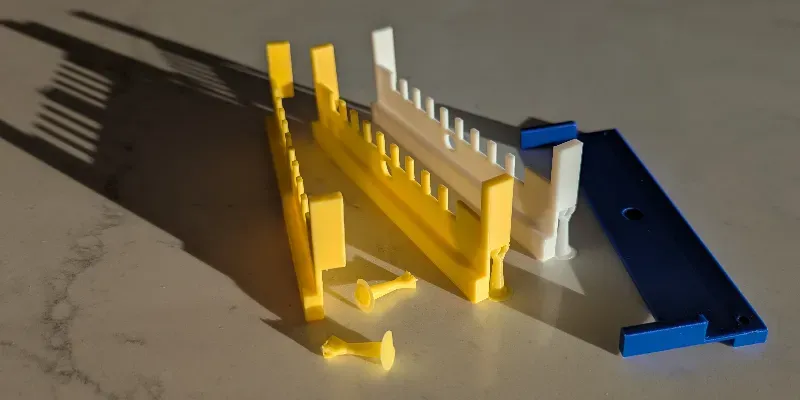3D printing for beekeeping — part 2

Black Friday traditionally marks the start of a month of excessive spending, eating, drinking, and family feuding (delete any that don't apply). It's the first Friday after Thanksgiving in the US, so falls at the end of November. It's the busiest shopping day of the year {{1}}, and is now extended by the arriviste marketing opportunity that is Cyber Monday.
If your email inbox is anything like mine, you will already have been bombarded by 'Black Friday specials' at 'never to be repeated prices'.
Already! … a fortnight before Black Friday's orgy of consumerism.
Astute readers — by which I mean anyone with a pulse — will be well aware that these never to be repeated prices may well be higher than those offered just a month or two ago, and will almost certainly be lower again in the New Year's sales.
Analysis by the consumer magazine Which noted that:
Our research shows a shocking 98% of Black Friday 2021 deals were cheaper or the same price at other times of the year.
So, for 'never to be repeated' read 'recently cheaper, and soon to be beaten'.
Oh yes, why 'traditionally' in the opening sentence? The etymology is a bit murky, with the term Black Friday evolving over the last ~75 years. It originally referred to the day workers called in sick after overindulgence at Thanksgiving.
However, since the '80s it's been associated with consumer — rather than consumed — overindulgence, and it's starting earlier and lasting longer every year. Cyber Monday is a relative upstart, only dating back to 2005 when online shopping was invented.
Nevertheless, despite my obvious cynicism, there are bargains to be had, particularly of older or soon-to-be-replaced technology, where upgrades appear on an annual cycle.
Taking the hint
While perusing the site I purchased my 3D printer from, I noticed that they have Black Friday deals on some models (including the one I bought {{2}}).
This, coupled with the obvious interest in the technology from emails I've received and questions following recent talks on DIY for beekeeping, prompted me to write this second instalment on 3D printing for beekeeping {{3}}.
For readers interested in the technology this additional background information — and potentially competitive Black Friday pricing {{4}} — might be enough to encourage you to start.
But what about those readers who are uninterested in the technology? If you can still appreciate the potential, you might be encouraged to seek out friends, association members, or commercial options, to print designs created by others for your bees or beekeeping.
However, if you have no interest in the technology, or the potential it offers, then please come back next week when I'll be discussing more midseason oxalic acid options, and the recent licensing of pure oxalic acid for beekeeping 😄. Exciting times.
The purpose of this post is to cover some of the background information that I wish I'd known when I started 3D printing. Inevitably it's a bit of a work in progress as I'm learning all the time. However, with ~600 hours of printing {{5}} in the last 9 months (and remarkably few failures), I think the information could be useful … and should save you a few quid if you do choose to start.
But first … here's something I've made recently for the Christmas market sales, part of a 'tasting station' to encourage would-be purchasers to become customers.

It works 😄. I know 'Taste the Difference' is probably trademarked by Sainsbury's, but I'm tempted to use it.
Sponsors get more … posts, news, and information on the science, art, and practice of sustainable beekeeping. They also have access to over a decade of legacy posts, and ensure The Apiarist continues to appear every week.